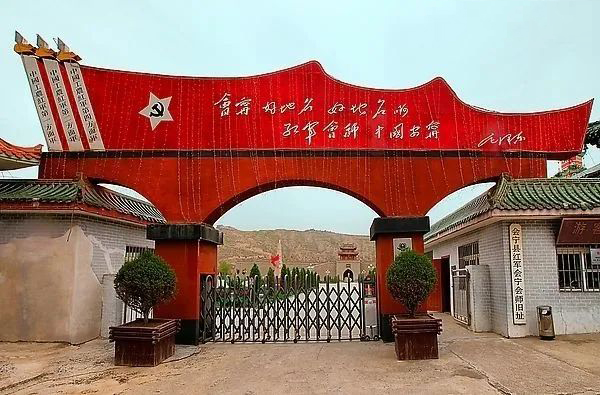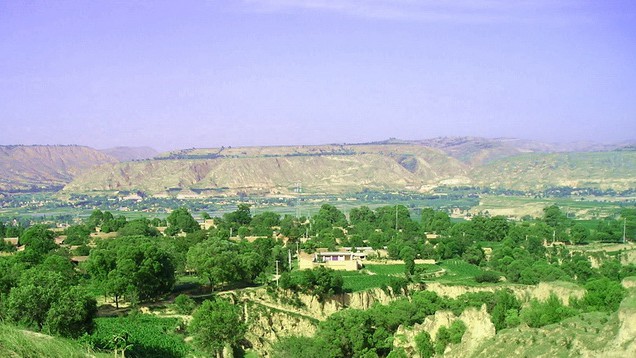Experience Authentic Gansu: A Journey to Baiyin Yongtai Chengzhi
An Essential Guide to Visiting Baiyin Yongtai Chengzhi
In This Guide
- An Essential Guide to Visiting Baiyin Yongtai Chengzhi
- The Rich History of Baiyin Yongtai Chengzhi
- Main Highlights: What to See at Baiyin Yongtai Chengzhi
- Planning Your Visit: A Practical Guide
- Tickets, Hours, and Booking
- How to Get There
- Local Cuisine and Accommodation
- Frequently Asked Questions
- Final Thoughts on Your Trip
Nestled on the edge of the Gobi Desert in Gansu Province, the ancient city of Baiyin Yongtai Chengzhi, commonly known as the “Turtle City,” stands as a testament to China’s rich historical tapestry. With over 400 years of history, this remarkable fortress was originally constructed during the Ming Dynasty as a military outpost, strategically designed to defend against northern invasions. Its unique architecture, resembling a turtle when viewed from above, not only symbolizes longevity and stability but also serves as a reminder of the city’s pivotal role along the Silk Road.
As you wander through the remnants of Yongtai, you’ll encounter well-preserved earthen walls, ancient residential structures, and historical landmarks that capture the essence of life from centuries past. The city is now recognized as a national key cultural relic protection unit, reflecting its significance in both military history and architectural heritage.
In recent years, Yongtai has experienced a renaissance, transitioning from a neglected relic to a vibrant cultural site, attracting tourists and filmmakers alike. With ongoing preservation efforts and plans for sustainable tourism development, the ancient city is poised to reclaim its status as a must-visit destination along the Silk Road. Visitors can immerse themselves in the serene beauty of the Gobi landscape, explore the intricate stories embedded in the ancient walls, and witness the enchanting night sky free from urban light pollution—a true paradise for stargazers and history enthusiasts alike.

Baiyin Yongtai Chengzhi.
Prepare to embark on a journey through time as you explore Baiyin Yongtai Chengzhi, where every stone tells a story and every sunset paints a picture of history waiting to be discovered.
The Rich History of Baiyin Yongtai Chengzhi
Baiyin Yongtai Chengzhi, or Yongtai Ancient City, is a remarkable historical site located in Gansu Province, China. This ancient fortress has stood the test of time for over 400 years, with its origins dating back to the Ming Dynasty. Specifically constructed in 1608 under the direction of the military official Xing Yunlu, Yongtai served as a critical defensive stronghold against invasions from northern nomadic tribes. Its distinctive design, resembling a tortoise from an aerial view, earned it the nickname “Turtle City” (龟城).
Strategically situated at the edge of the Gobi Desert, Yongtai not only protected the local populace but also served as a vital checkpoint along the ancient Silk Road. This route was essential for trade and cultural exchange between China and the West. The fortifications of Yongtai, which include earthen walls stretching approximately 1,717 meters in length and standing 12 meters high, exemplify the military architectural ingenuity of the time. The city layout features a series of defensive structures, including embrasures and a moat, designed to fortify its defenses.
During its peak, Yongtai Ancient City was a bustling hub with over 1,300 households, where soldiers and their families lived. However, as the military significance of the site diminished over the centuries, the city’s population gradually decreased, leading to a decline in its structural integrity. The combination of natural erosion and human activity has posed significant challenges to the preservation of the ancient walls and buildings.
In recent years, efforts have been initiated to protect and restore Yongtai Ancient City. Recognizing its historical and cultural importance, local authorities have invested considerable resources into conservation projects. These efforts include reinforcing the city walls, restoring significant structures, and enhancing tourism facilities to attract visitors while ensuring the site’s preservation.

Baiyin Yongtai Chengzhi.
Today, Yongtai Ancient City stands as a testament to China’s rich history and cultural heritage. It has been designated a National Key Cultural Relic Protection Unit, highlighting its value not only as a military fortress but also as a symbol of resilience against the ravages of time. The ongoing preservation efforts aim to ensure that future generations can appreciate and learn from this remarkable site, which continues to draw historians, archaeologists, and tourists alike, eager to explore the stories embedded within its ancient walls.
Main Highlights: What to See at Baiyin Yongtai Chengzhi
Baiyin Yongtai Chengzhi, also known as “Turtle City,” is a remarkable historical site nestled in the arid landscapes of Gansu Province, China. Here are the key highlights that make this ancient fortress a must-visit destination:
A Living History
Constructed in 1608 during the Ming Dynasty, Yongtai Chengzhi served as a military stronghold strategically established to defend against northern invasions. Its impressive earthen walls, stretching over 1,700 meters, exemplify ancient military architecture and design. Today, it stands as one of the best-preserved military fortifications from the era, designated as a National Key Cultural Relic.
Unique Architecture
The fortress is renowned for its distinctive turtle-like shape, which symbolizes longevity and protection in Chinese culture. Visitors can walk along the weathered walls and explore various structures, including the ancient city gates and remnants of traditional homes. Notably, the Yongtai Primary School, built in the early 20th century, showcases a blend of Gothic and traditional Chinese architectural styles, still standing in good condition.
Cultural Significance
The site offers a profound glimpse into the historical context of the Silk Road, marking it as a vital nexus where trade routes converged. Yongtai Chengzhi’s strategic location made it a crucial outpost, facilitating exchanges between cultures and contributing to the region’s rich history.
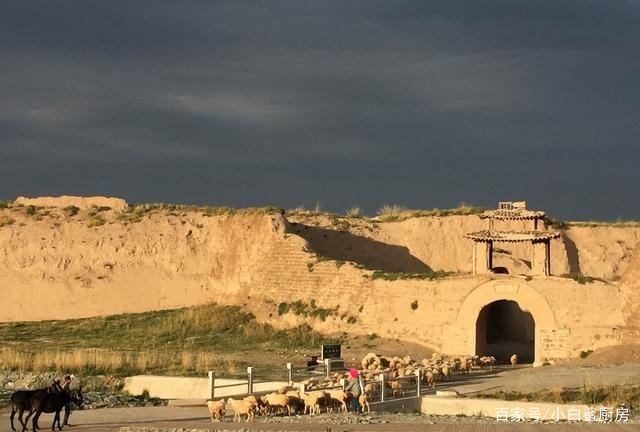
Baiyin Yongtai Chengzhi.
Scenic Beauty
Surrounded by the vast expanse of the Gobi Desert and beneath a star-studded sky, the ancient city provides breathtaking views and a tranquil escape from urban life. It is an ideal spot for photography enthusiasts, especially during sunset when the golden rays illuminate the ancient walls, creating a magical atmosphere.
Preserving Heritage
Recent efforts have been made to protect and restore the site, ensuring its preservation for future generations. The local government has invested significantly in conservation projects, enhancing both the physical structure and visitor facilities. This commitment to heritage conservation reflects a growing awareness of the site’s cultural importance.
A Cultural Experience
Visitors to Yongtai Chengzhi can engage with the local community, where a handful of residents still inhabit the area, maintaining the traditional lifestyle. Travelers may encounter shepherds guiding their flocks through the ancient gates, offering a glimpse into the pastoral life that has persisted for centuries.
Accessibility and Visitor Information
Yongtai Chengzhi is located about 25 kilometers from the county seat of Jingtai, making it easily accessible by car. There is no admission fee, allowing visitors to enjoy the site freely. Whether you’re interested in history, architecture, or simply seeking a unique travel experience, Yongtai Chengzhi promises an unforgettable journey into China’s storied past.
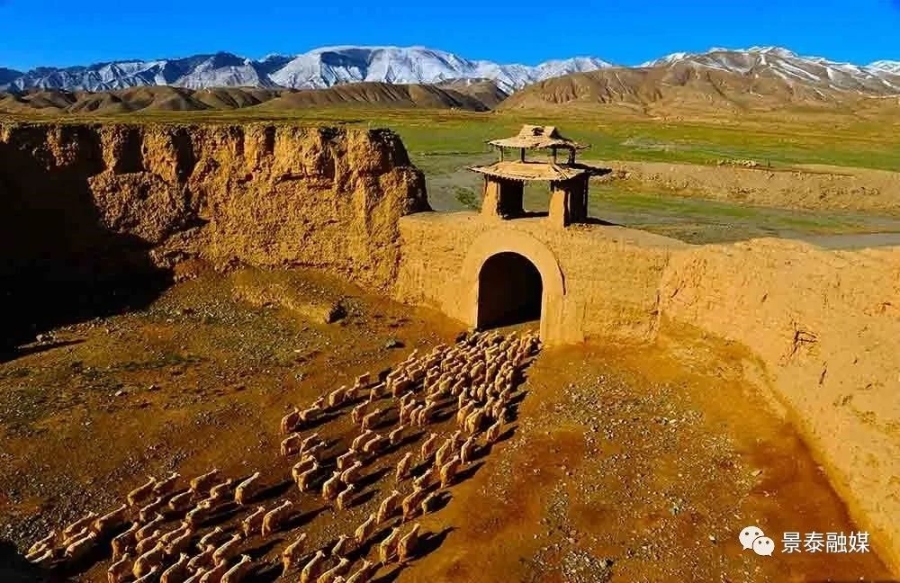
Baiyin Yongtai Chengzhi.
This ancient fortification is not just a relic of the past; it is a testament to the resilience and ingenuity of its builders, inviting travelers to uncover the layers of history that continue to shape this remarkable corner of the world.
Planning Your Visit: A Practical Guide
Practical Guide to Visiting Baiyin Yongtai Chengzhi (永泰城址)
Nestled in the scenic Gansu province, Baiyin Yongtai Chengzhi, also known as Yongtai Ancient City or “Turtle City” due to its unique shape, is a remarkable historical site that dates back over 400 years to the Ming Dynasty. This ancient military fortress is not just a relic of the past, but a vibrant destination for modern travelers interested in history, culture, and stunning landscapes. Here’s your comprehensive guide to making the most of your visit.
Getting There
Location:
Yongtai Ancient City is located approximately 27 kilometers southwest of Jingtai County, in Baiyin City, Gansu Province.
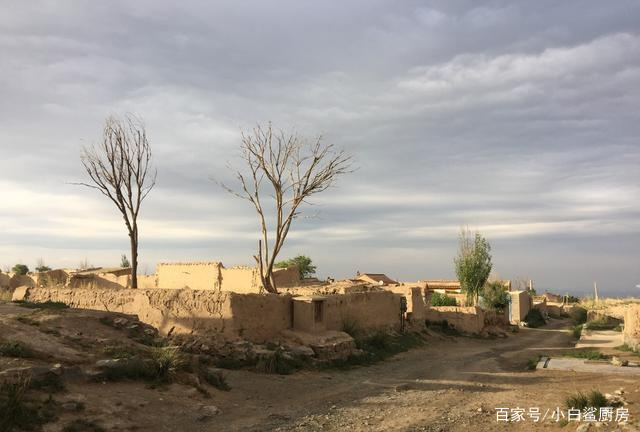
Baiyin Yongtai Chengzhi.
Transportation:
– By Car: The most convenient way to reach Yongtai is by car. From Lanzhou, it’s about a 3-hour drive via G22 Jingzang Expressway. If you’re coming from Baiyin, the journey takes approximately 2 hours.
– Public Transport: You can take a bus from Lanzhou or Baiyin to Jingtai County. Once in Jingtai, it’s advisable to hire a local taxi or ride-share to reach the ancient city.
Admission
Entry Fee:
Admission to Yongtai Ancient City is free, allowing visitors to explore the historic site without any constraints.
Opening Hours:
The site is open year-round, 24 hours a day. However, visiting during daylight hours is recommended for the best experience.
What to See and Do
-
Explore the Ancient Walls:
Walk along the impressive earthen walls, which stretch over 1,700 meters. The walls are a testament to ancient military architecture and offer panoramic views of the surrounding Gobi Desert. -
Visit Historical Structures:
Key landmarks include: - The City Gates: Marvel at the main gates, which showcase traditional Ming architectural styles.
- Yongtai Primary School: Built in the 1920s, this well-preserved building features a blend of Eastern and Western architectural influences.
-
Ancient Wells and Ponds: Visit the ancient water sources, including the Five Eyes Well and Ganlu Pool, which were vital for the city’s inhabitants.
-
Photography Opportunities:
Yongtai is renowned for its picturesque landscapes and historical ambiance. The best times for photography are during sunrise and sunset when the light casts a warm glow over the ancient structures. -
Night Sky Watching:
Due to its remote location and minimal light pollution, Yongtai Ancient City is a fantastic spot for stargazing. Bring a telescope or just lie back and enjoy the celestial display. -
Experience Local Culture:
Engage with the few remaining residents who still live in traditional homes. You may have the chance to learn about their lifestyles and the history of the fortress.
Nearby Attractions
- Yellow River Stone Forest: About 60 kilometers from Yongtai, this geological marvel features stunning rock formations and is perfect for a day trip.
- Jingtai Salt Lake: Known as “China’s Mirror of the Sky,” this picturesque lake is approximately 40 kilometers away and offers excellent photography opportunities.
- Tiaoshan Farm: Enjoy fruit picking and experience rural life just a short distance from the ancient city.
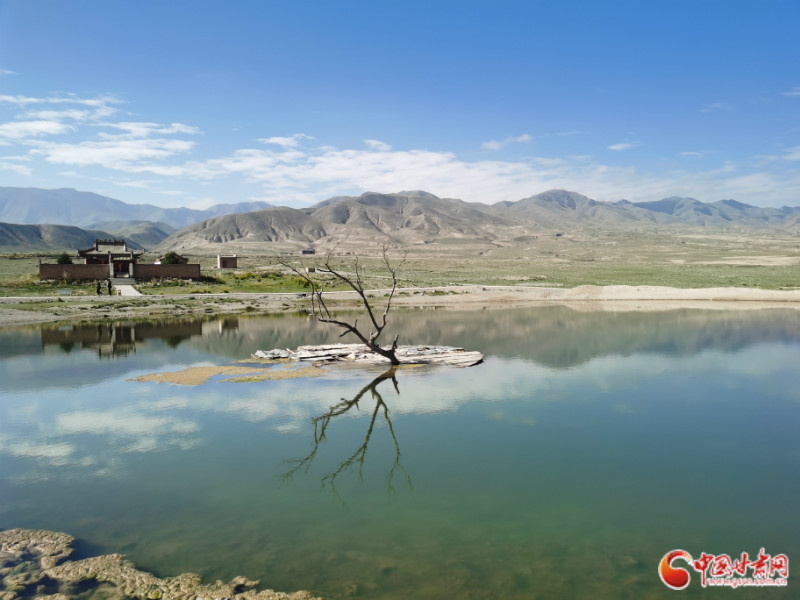
Baiyin Yongtai Chengzhi.
Practical Tips
- Best Time to Visit: Spring (April to June) and Autumn (September to November) are ideal for pleasant weather and to avoid the harsh summer heat.
- What to Bring: Wear comfortable walking shoes, bring a hat for sun protection, and pack a water bottle to stay hydrated. A camera is essential for capturing the stunning landscapes and historical features.
- Local Cuisine: Don’t miss trying local dishes such as hand-pulled noodles and roasted lamb, which are popular in the region.
Safety and Etiquette
- Respect the Site: As a national cultural heritage site, it’s essential to respect the historical structures and natural surroundings. Avoid climbing on walls or disturbing the ruins.
- Engage Politely with Locals: If you meet residents, greet them with a smile and be respectful of their privacy and traditions.
Yongtai Ancient City is not just a destination; it’s a journey through time that offers insights into China’s rich history and culture. Whether you’re an avid historian, a photography enthusiast, or simply seeking a unique travel experience, Yongtai is sure to leave a lasting impression. Enjoy your adventure!
Tickets, Hours, and Booking
Visitors to Baiyin Yongtai Chengzhi (永泰城址), also known as the “Turtle City,” will be pleased to know that accessing this historical gem is completely free of charge. The ancient city, steeped in over 400 years of history and recognized as a national key cultural relic, offers open access year-round, allowing both tourists and locals to explore its fascinating remains without any entry fee.
Important Details:
-
Opening Hours: Yongtai Chengzhi is open 24 hours a day, every day of the year, providing ample opportunity for visitors to experience the majestic city walls and ancient structures at their convenience, whether during the day or under a starry night sky.
-
Location: The site is located approximately 27 kilometers southwest of the county seat of Jingtai in Gansu Province, making it relatively easy to reach by car or local transport. Self-driving is highly recommended for the best experience.
-
Transportation Suggestions:
- Self-Drive: Traveling from Lanzhou takes about 3 hours, while the journey from Baiyin city is around 2 hours. The roads are well-maintained and scenic, making for a pleasant drive.
-
Public Transport: While public transport options may be limited, buses from Lanzhou or Baiyin to Jingtai are available, followed by a short taxi or ride-sharing service to reach the ancient city.
-
Amenities: While the city itself is largely untouched by commercial development, basic amenities like local eateries can be found nearby for those wishing to enjoy a meal or snack during their visit.

Baiyin Yongtai Chengzhi.
Yongtai Chengzhi offers a unique opportunity to step back in time and immerse yourself in the rich history of China’s Silk Road. Enjoy your exploration of this magnificent fortress without any ticketing concerns!
How to Get There
Baiyin Yongtai Chengzhi, also known as Yongtai Ancient City or Turtle City due to its unique shape resembling a turtle, is located approximately 27 kilometers southwest of Jingtai County in Baiyin City, Gansu Province. This historical site is accessible through various modes of transportation, making it convenient for travelers to explore this ancient military fortress.
Getting There
By Car
The most flexible way to reach Yongtai Ancient City is by driving. From Lanzhou, the capital of Gansu Province, you can take the G22 Lanzhou–Haikou Expressway, which leads to Baiyin City. Follow the signs for Jingtai County, and then take local roads toward Yongtai Village. The entire journey takes about 2.5 to 3 hours, depending on traffic conditions. The roads are generally well-maintained, making it a pleasant drive through scenic landscapes.

Baiyin Yongtai Chengzhi.
For those coming from Baiyin City, the drive is approximately 1.5 hours. There is ample parking available near the entrance to the ancient city, allowing you to explore the site at your leisure.
By Public Transport
If you prefer public transportation, you can catch a bus from either Lanzhou or Baiyin City to Jingtai County. Here’s how to navigate the public transport options:
-
From Lanzhou: Take a long-distance bus from the Lanzhou Bus Station to Jingtai County. The journey takes about 3 hours, and tickets typically cost around 46 yuan. Once you arrive at Jingtai, you’ll need to hire a local taxi or a ride-sharing service to reach Yongtai Ancient City, which is about a 30-minute ride away (approximately 100 yuan round trip).
-
From Baiyin: Similar to the route from Lanzhou, take a bus from Baiyin City to Jingtai County. This trip takes about 2 hours, with tickets priced at around 25 yuan. Again, a local taxi will be necessary to complete the journey to the ancient city.

Baiyin Yongtai Chengzhi.
By Guided Tour
For those looking for a more organized experience, consider joining a guided tour that includes transportation. Many companies in Gansu offer day trips that cover Yongtai Ancient City along with other nearby attractions, such as the Yellow River Stone Forest. These tours typically include transportation, a guide, and sometimes meals, providing a hassle-free way to explore the region.
Local Transportation Options
Once you arrive at Yongtai Ancient City, the site is compact and best explored on foot. Walking allows you to fully appreciate the ancient architecture and the stunning desert views. There are no public transport options within the site, so be prepared to walk and wear comfortable shoes.
Tips for Travelers
- Best Time to Visit: Consider visiting during the cooler months of spring (April to June) or autumn (September to October) for the best weather. Summers can be hot, while winters can be quite cold.
- Photography: The ancient city is a prime location for photography, especially at sunrise and sunset when the light casts beautiful shadows on the structures.
- Cultural Respect: When visiting, be respectful of the local culture and the historical significance of the site. Avoid straying off marked paths to help preserve the integrity of the ancient city.
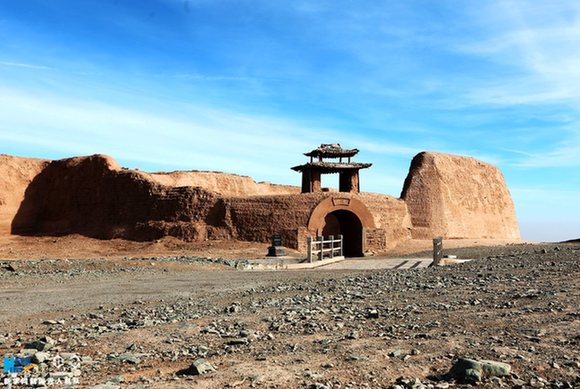
Baiyin Yongtai Chengzhi.
With its rich history and stunning architecture, Yongtai Ancient City is well worth the journey. Whether you drive or take public transport, the trip promises a glimpse into China’s past and the chance to explore one of the Silk Road’s significant landmarks.
Local Cuisine and Accommodation
When planning your visit to Baiyin Yongtai Chengzhi (永泰城址), food and accommodation options are essential aspects to enhance your experience in this historic site. Here are some recommendations to help you savor local cuisine and find a comfortable place to stay.
Dining Options
Local Delicacies
-
Hand-Pulled Noodles (拉面): A must-try when in the region, these noodles are known for their chewy texture and are typically served in a rich broth. Look for local eateries in nearby towns where you can enjoy this staple dish.
-
Braised Lamb (酸爛肉): This dish features tender lamb slow-cooked with pickled vegetables, offering a tangy flavor that perfectly complements the richness of the meat. It’s a hearty option, ideal after a day of exploration.
-
Roasted Whole Lamb (烤全羊): For a true taste of local hospitality, seek out a farmstay or local restaurant that offers this traditional feast. It’s often served during special occasions and can be a memorable experience for groups.
-
Yellow River Melon (黃河蜜瓜): If you visit during the summer months, don’t miss out on this sweet, juicy melon variety, which is a local favorite. It’s perfect for refreshing yourself after a day in the sun.
Food Markets and Stalls
For a more casual dining experience, check out the night market in Baiyin or nearby towns. Here, you can find a variety of street food including grilled skewers, dumplings, and local snacks that give you a taste of the region’s culinary diversity.
Accommodation Recommendations
Guesthouses and Farm Stays
-
Yongtai Village Guesthouse: Located near the ancient city, this guesthouse offers basic amenities with a charming, rustic feel. It’s ideal for travelers looking to immerse themselves in local culture.
-
Lao Hu Mountain Farm Stay: Just a short drive from Yongtai Chengzhi, this farm stay provides a peaceful retreat amidst nature. Guests can enjoy home-cooked meals featuring local ingredients and experience rural life firsthand.
-
Jing Tai Hotel: For those seeking more comfort, this hotel in Jingtai County offers modern conveniences, including a restaurant and free Wi-Fi. It serves as a good base for exploring the surrounding attractions.
-
Yongtai Ancient Town Inn: Situated right in the heart of Yongtai, this inn lets you step back in time with its traditional architecture. The owners are often eager to share stories about the history of the ancient city.
Tips for Staying in Baiyin Yongtai Chengzhi
- Book in Advance: Accommodation options in this region can fill up quickly, especially during peak tourist seasons. It’s wise to secure your booking ahead of time.
- Explore Local Dining: Don’t hesitate to ask locals for recommendations on where to eat. The best meals are often found in small, family-run restaurants that might not be listed in travel guides.
- Enjoy the Atmosphere: Many accommodations offer stunning views of the surrounding landscape, so take the time to relax and enjoy the scenery after your day of exploration.
With these food and accommodation options, your visit to Baiyin Yongtai Chengzhi promises to be as delightful for your taste buds as it is for your historical curiosity.
Frequently Asked Questions
-
What is Baiyin Yongtai Chengzhi (永泰城址)?
Baiyin Yongtai Chengzhi, also known as Yongtai Ancient City or the “Turtle City,” is a well-preserved military fortress dating back over 400 years, built during the Ming Dynasty. Located in Gansu Province, China, it was constructed to defend against invasions from northern ethnic groups and is a crucial part of the Great Wall’s defensive system. -
How do I get to Yongtai Ancient City?
The best way to reach Yongtai Ancient City is by car. It is approximately a 3-hour drive from Lanzhou, the capital of Gansu Province, and around 2 hours from the city of Baiyin. Public transport options include buses to Jingtai County, followed by a taxi or rented vehicle to the ancient city. -
Is there an entrance fee for Yongtai Ancient City?
No, visiting Yongtai Ancient City is completely free. It is open to the public year-round, allowing visitors to explore its historical structures and scenic surroundings without any charge. -
What are the main attractions within Yongtai Ancient City?
Key attractions include the ancient city walls, the remains of traditional mud-brick houses, the historical Yongtai Primary School, and the surrounding natural landscapes. The unique architecture and the serene environment make it a perfect spot for photography and cultural exploration. -
What is the best time to visit Yongtai Ancient City?
The ideal time to visit is during spring and autumn when the weather is mild and comfortable for outdoor activities. Early mornings and late afternoons are particularly recommended for stunning views and photography opportunities, especially during sunset. -
Are there any accommodations near Yongtai Ancient City?
While there are limited accommodation options directly in Yongtai, visitors can find guesthouses or hotels in nearby Jingtai County. For a more local experience, staying in a traditional farmhouse may also be available. -
Can I take photographs in Yongtai Ancient City?
Yes, photography is welcomed in Yongtai Ancient City. The ancient structures and beautiful natural scenery provide countless opportunities for stunning photographs, particularly during the golden hours of sunrise and sunset. -
What should I be aware of when visiting Yongtai Ancient City?
As a protected cultural site, visitors are encouraged to respect the local environment and historical structures. It is important to avoid damaging the ruins and to be considerate of the few local residents who still live in the area. Additionally, be prepared for significant temperature fluctuations, as the region can be quite warm during the day and chilly at night.
Final Thoughts on Your Trip
As you embark on your journey to Baiyin Yongtai Chengzhi, also known as the “Turtle City,” prepare to be captivated by a blend of history, culture, and breathtaking landscapes that tell the story of China’s resilient spirit. This ancient military fortress, with its impressive earthen walls and unique architecture, serves as a testament to the ingenuity of the Ming Dynasty and the significance of the Silk Road.
In recent years, efforts have been made to preserve this gem, ensuring that it remains a vibrant part of our cultural heritage. As you stroll through the remnants of this once-thriving city, you will find echoes of the past in the ancient homes, the enduring spirit of the local residents, and the stunning desert backdrop. The tranquil environment, combined with the starry skies, makes it a perfect retreat for photographers and history enthusiasts alike.
Visiting Yongtai Chengzhi is not just about witnessing a piece of history; it is an opportunity to connect with the essence of a culture that has persevered through centuries. By exploring this remarkable site, you contribute to the ongoing narrative of preservation and appreciation for our shared heritage. So pack your bags, grab your camera, and get ready to create unforgettable memories in this enchanting corner of China.


